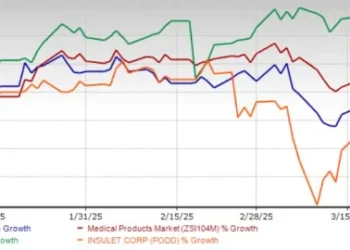In the escalating battle over obesity treatment in the United States, the pharmaceutical industry has found an unexpected foe: local compounding pharmacies.
As demand for GLP-1 receptor agonists like Mounjaro (tirzepatide) and Ozempic (semaglutide) explodes—buoyed by weight-loss trends, celebrity endorsements, and legitimate medical need—pharmaceutical titan Eli Lilly has gone on the offensive. In late 2023 and into 2024, the company filed multiple lawsuits against compounding pharmacies across the U.S., accusing them of unlawfully copying its patented medications, misleading customers, and putting public safety at risk.
The legal filings describe these compounds as “unapproved” and “adulterated.” But the story is more complicated. Compounding pharmacies are not rogue labs in back alleys—they are licensed, regulated businesses, often praised for personalized care and for filling gaps left by Big Pharma.
What’s unfolding is not just a patent dispute. It’s a clash over access, ethics, and authority—at a time when the U.S. is struggling to manage a metabolic health crisis and a profit-driven healthcare system.
The Weight-Loss Gold Rush
Drugs like Mounjaro and Ozempic were originally developed to treat type 2 diabetes. But clinical trials soon revealed another striking benefit: rapid, sustained weight loss. By mimicking the hormone GLP-1, these drugs slow digestion, reduce appetite, and improve insulin sensitivity.
Demand surged. So did off-label prescriptions. By late 2023, the U.S. market for GLP-1 drugs had reached an estimated $50 billion, with projections climbing even higher as the FDA expanded approvals and insurers began adjusting coverage.
But success came with a catch: supply chain strain. Backorders plagued retail pharmacies. Some patients were forced to go without treatment—or look elsewhere.
That’s where compounding pharmacies stepped in.
What Compounding Pharmacies Actually Do
Compounding pharmacies have long served a unique role in American medicine. Unlike commercial drug manufacturers, these facilities custom-mix medications for individual patients—adjusting dosages, removing allergens, or combining drugs into single formulations.
They are regulated by state boards of pharmacy and must comply with federal rules established by the FDA and U.S. Pharmacopeia (USP). While they do not manufacture FDA-approved drugs, they are permitted to produce versions of drugs listed on the FDA’s drug shortage list—as was the case with semaglutide and tirzepatide in 2023 and early 2024.
“We are not copying Eli Lilly’s drug,” says Dr. Marissa Dalton, a compounding pharmacist in Texas. “We’re providing access to patients who otherwise have no legal or affordable alternative.”
That access often comes with a cost advantage. While a month’s supply of Mounjaro can exceed $1,000 without insurance, compounded versions may sell for $300 to $500—a major factor for uninsured or underinsured patients.
Eli Lilly Strikes Back
Eli Lilly’s lawsuits allege that some compounding pharmacies are going beyond legal bounds: mislabeling products, sourcing raw ingredients from questionable suppliers, and creating versions of tirzepatide without evidence of equivalence or safety.
In one high-profile suit, Lilly accused U.S. pharmacies of misleading patients into thinking they were receiving the same drug, and using trademarks like “Mounjaro” to boost sales. The company also raised concerns that some compounded drugs contain semaglutide salts, which are not the same as the active ingredient in Ozempic or Wegovy.
The legal strategy seems clear: protect intellectual property and control market dominance.
“We will always take action to protect patient safety and the integrity of our medicines,” the company said in a public statement. “Unauthorized versions of our therapies pose a significant risk.”
But critics argue Lilly’s motivations are not entirely altruistic.
“This is about profit,” says Dr. Raj Patel, a pharmacoeconomist. “The lawsuits are timed perfectly with Lilly’s efforts to expand its market share for Mounjaro and launch new obesity drugs like Zepbound.”
Indeed, Zepbound—another version of tirzepatide for weight loss—received FDA approval in late 2023 and is already being positioned as a market leader. If compounding pharmacies continue to fill gaps in availability and pricing, they could disrupt what analysts call a “once-in-a-generation blockbuster drug cycle.”
Regulatory Limbo and Public Confusion
Compounding pharmacies operate in a legal grey zone. While the FDA discourages the compounding of copies of FDA-approved drugs, it permits compounding from bulk substances during shortages—provided certain conditions are met.
The language of the law is ambiguous. The FDA has not explicitly banned the compounding of semaglutide or tirzepatide, but it has issued warnings about sourcing and quality. Compounding groups, in turn, have pushed for clearer guidance and more standardized sourcing chains.
In the meantime, patients are caught in the middle.
“I couldn’t get Mounjaro anywhere,” says Brianna Lewis, a 39-year-old patient in Florida. “My doctor recommended a local compounding pharmacy. I’ve been using it for four months. I’ve lost 25 pounds and feel better than I have in years. Why would Eli Lilly want to take that away from me?”
The issue is not just legal—it’s philosophical. Should access to life-changing medications be tied to a manufacturer’s supply chain? And should a large corporation have exclusive control over a class of medication that millions now depend on?
Quality Concerns vs. Quality Claims
Eli Lilly’s lawsuits hinge in part on the quality and safety of compounded medications. But many in the field argue that accredited compounders follow rigorous standards.
Organizations like the Pharmacy Compounding Accreditation Board (PCAB) certify pharmacies that meet stringent quality and testing protocols. Accredited facilities often go beyond what is legally required, using third-party labs to verify sterility, potency, and ingredient authenticity.
“Not all compounders are equal, and that’s part of the problem,” says Rachel Greene, a pharmacist and board member of a national compounding network. “We support cracking down on bad actors. But don’t paint the whole industry with one brush.”
Some experts also point out that Big Pharma’s own manufacturing is not immune to errors. In 2021, an FDA inspection found lapses at a major plant producing semaglutide. The difference is that when a multinational pharmaceutical firm falters, it’s considered an exception—not a condemnation of the entire industry.
A Bigger Fight Over Drug Pricing
Beneath the legal filings and press releases lies a larger question: What role should compounding pharmacies play in a healthcare system dominated by monopolistic pricing?
For decades, compounding has been a pressure valve—a way to address shortages, customize treatment, and keep prices in check. But with the pharmaceutical industry’s growing emphasis on patent protections and market exclusivity, that role is increasingly under threat.
“Compounding pharmacies are among the last bastions of independent pharmaceutical practice,” says Dr. Allen Marx, a health policy analyst. “If they lose this battle, patients may lose more than access—they’ll lose leverage in a system stacked against them.”
The Road Ahead
The legal outcomes of Eli Lilly’s lawsuits remain uncertain. Some compounding pharmacies have settled. Others are fighting back. Meanwhile, patient advocacy groups are urging regulators to provide clearer, more consistent rules.
If shortages persist and prices remain high, compounded weight-loss medications may continue to fill the gap—regardless of legal skirmishes.
At the heart of the fight is a simple yet powerful question: Who controls the future of medicine—corporations, regulators, or communities of care providers?
As America faces a growing crisis of obesity, metabolic disease, and healthcare inequality, the answer may determine not just what’s on our pharmacy shelves—but who gets to thrive.















